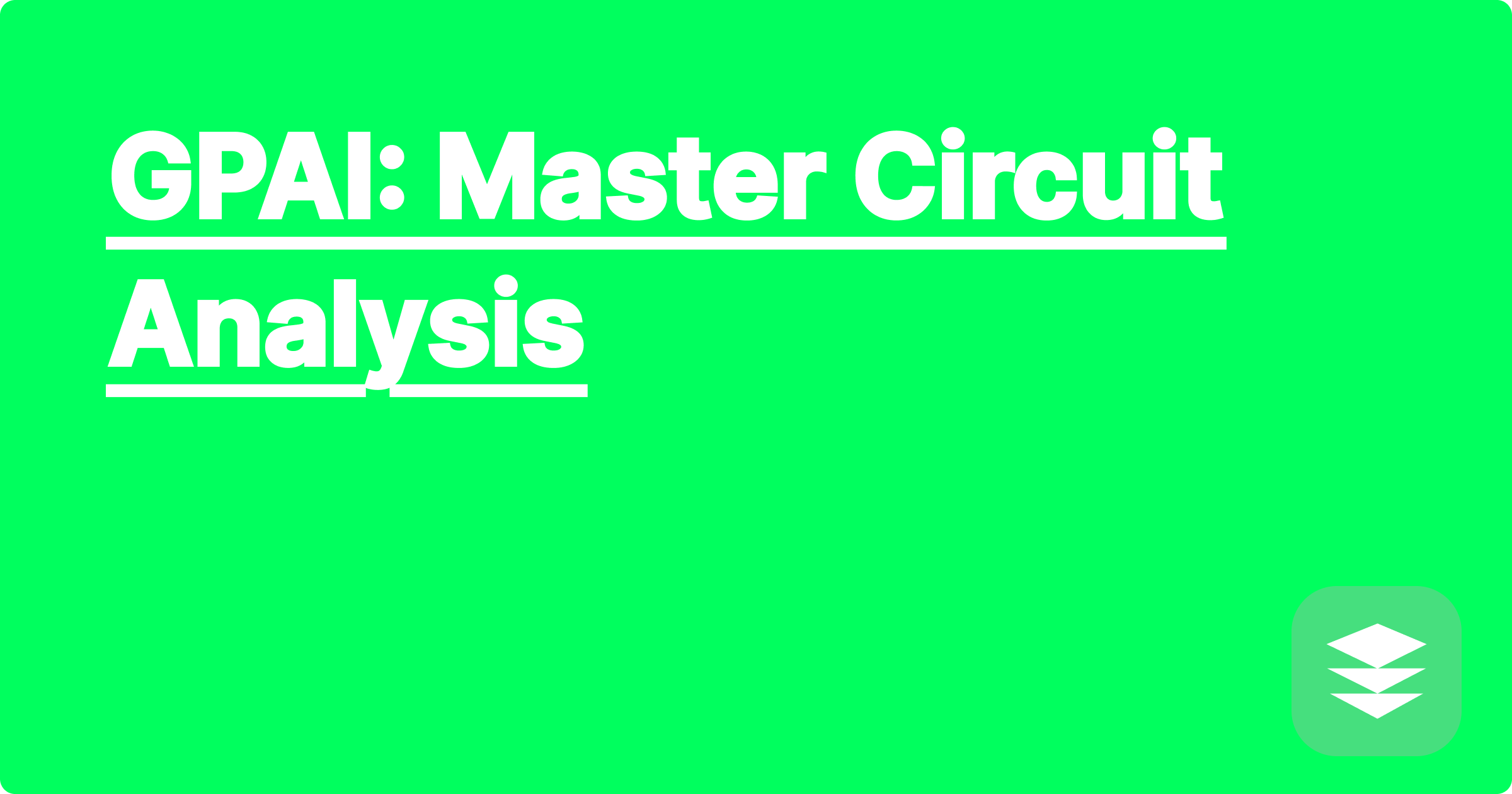
Circuit analysis, a cornerstone of electrical engineering and related STEM fields, often presents a significant challenge for students and researchers. Grasping the intricate interplay of components, understanding complex theorems, and accurately predicting circuit behavior can be daunting. The emergence of Generative Pre-trained Transformer (GPT) models and other AI tools offers a powerful new approach to mastering these complexities, providing intelligent assistance and accelerating the learning process. These AI companions can act as virtual tutors, offering explanations, generating practice problems, and even helping to verify solutions, ultimately empowering STEM learners to navigate the intricacies of circuit analysis with greater confidence and efficiency.
This shift towards AI-assisted learning is particularly relevant for today's STEM students and researchers. The ever-increasing complexity of modern circuits demands a deeper understanding of underlying principles. AI tools can bridge the gap between theory and practice, providing personalized support that adapts to individual learning styles and paces. By leveraging these tools effectively, students can gain a more intuitive understanding of circuit behavior, while researchers can explore new design possibilities and optimize existing circuits with greater speed and accuracy. This ultimately leads to enhanced problem-solving skills and a more profound grasp of electrical engineering fundamentals.
Circuit analysis involves determining the voltage and current at various points within an electrical circuit. This seemingly simple task can quickly become complex when dealing with multiple components, varying sources, and different circuit topologies. Students often struggle with applying fundamental laws like Kirchhoff's Current Law (KCL) and Kirchhoff's Voltage Law (KVL), as well as understanding concepts like superposition, Thevenin's theorem, and Norton's theorem. Furthermore, analyzing transient behavior in circuits with capacitors and inductors can be particularly challenging. These difficulties can lead to frustration and hinder the development of a strong foundation in circuit analysis, impacting performance in subsequent coursework and research projects.
AI tools like ChatGPT, Claude, and Wolfram Alpha offer a novel approach to tackling these challenges. ChatGPT and Claude can be used to explain complex concepts in a conversational manner, providing personalized explanations and answering specific questions. For example, a student struggling with Thevenin's theorem can ask ChatGPT to explain the theorem in simpler terms, provide examples, and even generate practice problems. Wolfram Alpha excels at symbolic computation and can be used to solve complex circuit equations, verify solutions, and even generate circuit diagrams. This combination of explanatory power and computational prowess makes AI an invaluable asset for mastering circuit analysis.
To effectively utilize AI for circuit analysis, one can begin by clearly defining the problem. This includes drawing the circuit diagram, specifying the known values (like source voltages and component values), and identifying the desired unknowns (like node voltages or branch currents). Next, this information can be inputted into an AI tool like ChatGPT or Claude. The prompt should clearly state the objective, such as "Find the voltage across resistor R3" or "Determine the current through inductor L1". For complex problems, it can be helpful to break down the analysis into smaller, manageable steps and query the AI for assistance at each stage. Wolfram Alpha can be used to perform the actual calculations, verify solutions obtained through manual analysis, and explore the impact of varying component values on circuit behavior.
Consider a simple series circuit with a 12V voltage source, a 4Ω resistor (R1), and a 2Ω resistor (R2). To find the current flowing through the circuit, one could ask ChatGPT: "Calculate the current in a series circuit with a 12V source, a 4 ohm resistor, and a 2 ohm resistor." ChatGPT can then provide the solution, explaining that the total resistance is 6Ω (4Ω + 2Ω) and applying Ohm's law (V=IR) to find the current (I = V/R = 12V/6Ω = 2A). For more complex circuits involving AC sources and reactive components, Wolfram Alpha can be used to solve the resulting differential equations and provide solutions in both time and frequency domains. For instance, one could input the circuit parameters and ask Wolfram Alpha to calculate the impedance, phase angle, and resonant frequency.
To maximize the benefits of AI in circuit analysis, it's essential to treat these tools as learning aids, not replacements for fundamental understanding. Actively engage with the AI, asking clarifying questions and challenging its responses. Compare the AI-generated solutions with your own manual calculations to deepen your understanding and identify potential errors. Use AI to generate practice problems and explore different circuit configurations. Furthermore, remember that AI tools are constantly evolving. Stay updated on the latest features and capabilities to leverage their full potential. By integrating AI strategically into your learning workflow, you can transform circuit analysis from a daunting challenge into an engaging and rewarding experience.
In conclusion, AI tools offer a transformative approach to mastering circuit analysis. By providing personalized explanations, facilitating complex calculations, and offering interactive learning experiences, these tools empower STEM students and researchers to overcome common challenges and develop a deeper understanding of circuit behavior. Embrace these powerful resources, explore their capabilities, and unlock your full potential in the exciting world of electrical engineering. Start experimenting with different AI tools and discover how they can enhance your learning and research journey in circuit analysis. The future of STEM education and research is intertwined with AI, so begin exploring its potential today.
GPAI: Your Coding Homework Helper
GPAI: Streamline Your Research
GPAI: Differential Equations Solved